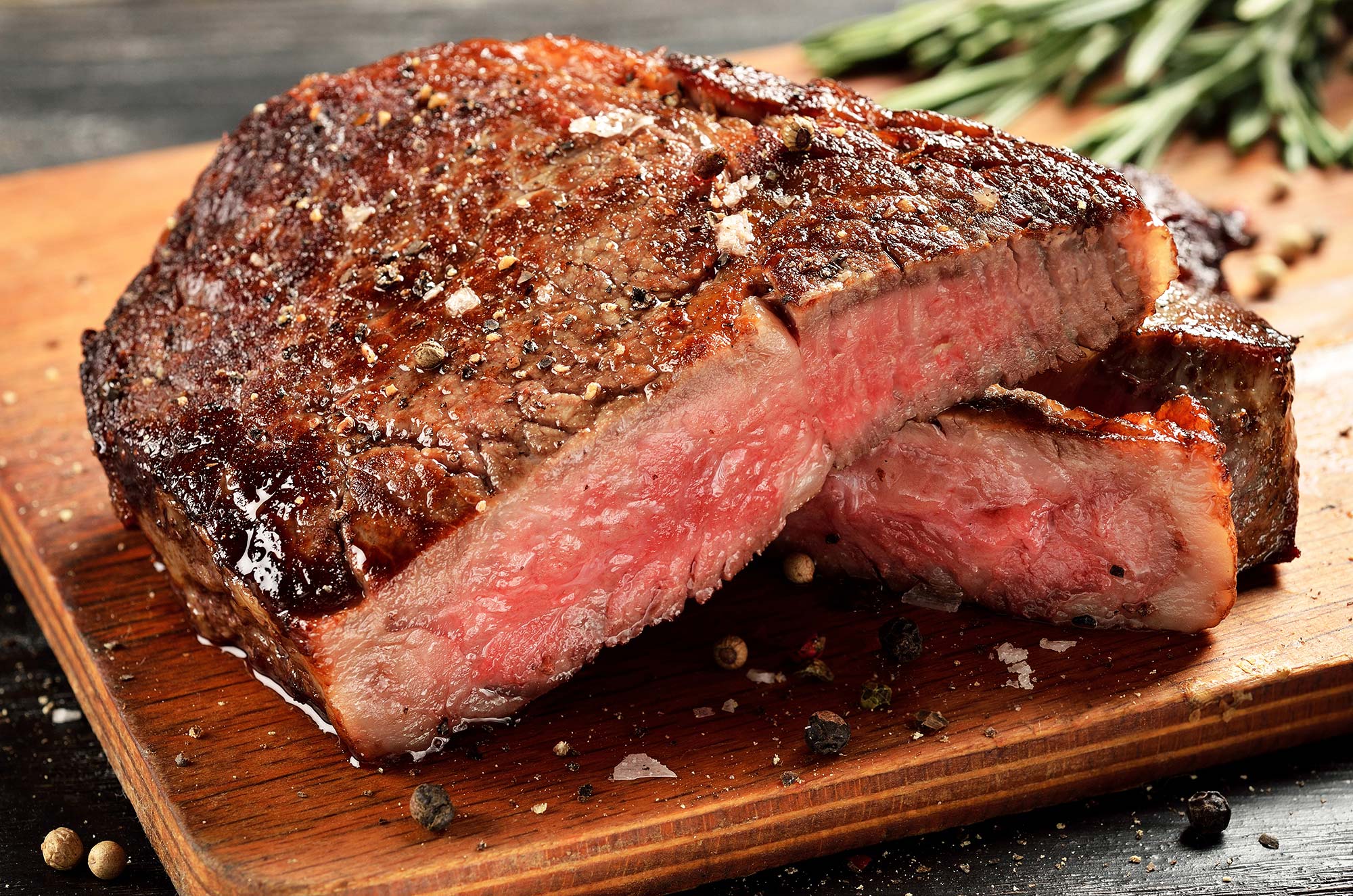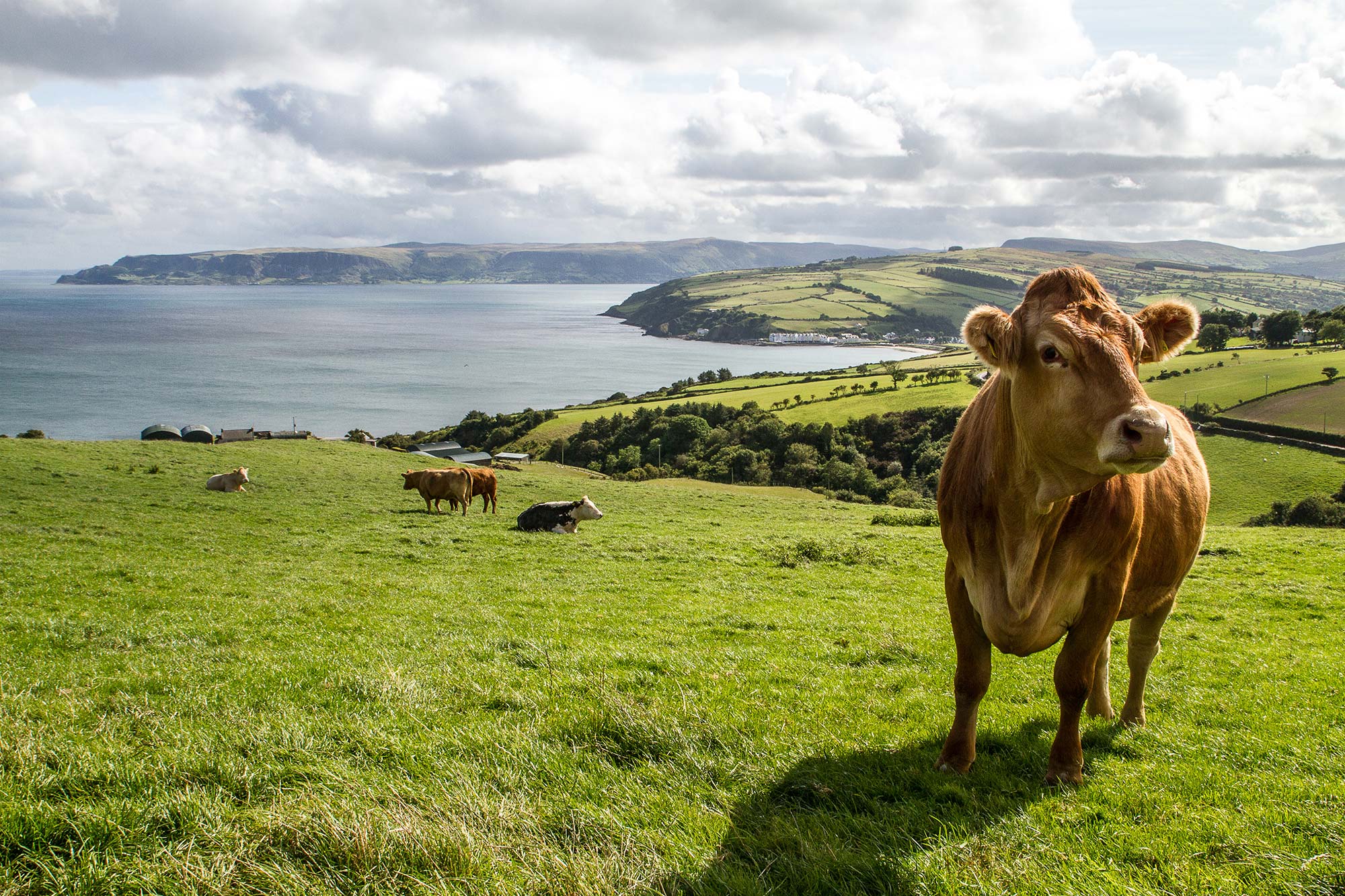Irish Nature Beef Savor the Goodness: Sustainable and Humane
Written by Charlie Sprague September 20, 2023When you think of beef, a few places come to mind as top producers. Australia might be on the list. Texas? Definitely. Maybe even Argentina. But Ireland? It’s more likely than you think! Though they may not be at the very top of the list for exports, they do go toe-to-toe with the best for amazingly juicy, tender, high quality beef. With over 80% of Ireland’s pastures devoted to raising cattle, Ireland is quickly becoming a big name in the beef industry. Of all the exporters in Ireland, Irish Nature stands out as the oldest, most established exporter in the country. But what exactly makes Irish Nature Beef so unique and delicious?
Were you raised in a barn? (No, a pasture!)
Cows in Ireland have it made. Thousands of acres in Ireland are covered completely in lush green grass, owing to Ireland’s mild, rainy weather and fertile soil. Cattle roam hundreds of pastures all across the country, grazing naturally on the plentiful grass for nearly the entire year. When the weather turns too cold, cows take shelter in open barns while feeding on a mix of stored grass and locally milled grains.
With Irish Nature beef, there's no need to choose between grass-fed or grain-fed. The combination of grass and grains throughout their lifetime means the cows enjoy a naturally diverse diet that comes through in the meat. Grass is a complete meal for cows, with a variety of vitamins and minerals contained within each blade. Not only that, because they're made to graze, cows digest grass very easily and absorb all of the healthy nutrients inside. This leads to cattle being able to more easily resist common diseases, too, eliminating the need for sub-thereputic antibiotics. Healthier cows means healthier meat, higher in Omega-3s and vitamins E and A.
Nutritious grains like barley and soy also provide cows with essential nutrients and energy during cold months, with the added benefit of enhancing the flavor of the finished product. Grains enhance beef’s unique web of intramuscular fat (or IMF), also known as marbling. This marbling is what we associate with a juicy, melt-in-your-mouth steak and a supreme, lightly sweet flavor. The level of IMF also determines what grade the beef receives, and Irish Nature is consistently at the top of the list with its Prime-level marbling.
Between being able to roam open pastures, grazing on all the green grass they can eat, and enjoying nourishing grains and grasses throughout winter, Irish Nature beef gets all the health benefits of grass-fed beef, and all the flavor and tenderness of grain-fed beef - all without stressing the animals or packing them into feedlots like sardines in a can.

Humane treatment = Happy cows
If a cow were to describe its perfect day, it would probably be a day out on green pastures, roaming and grazing. While the majority of conventionally raised cattle in our country are allowed to graze the first few months of their lives, they’re then crowded into huge barns called feedlots, given growth promotants and fed only on sugary grains to quickly fatten them up.
Irish Nature cattle are allowed to roam pastures 8-10 months of the year, only sheltered inside huge open barns when it becomes too cold for them to be outside. Cows are never given growth promotants or sub-theraputic antibiotics that impact the overall health of the animal and its meat. Plus, since Irish Nature cows are raised on hundreds of small farms throughout Ireland, farmers are able to give their entire herds the attention and care they need to grow up happy and healthy. All of these small farms adhere to a strict set of guidelines for the humane treatment of animals, known as the Five Freedoms of Animal Welfare.
- Freedom from hunger and thirst
- Freedom from discomfort
- Freedom from pain, injury and disease
- Freedom to express normal and natural behavior
- Freedom from fear and distress
Besides being the humane thing to do to raise cows in a stress-free environment, fear affects the taste of the final product. Meat from stressed animals is often tougher and darker in color, losing more moisture during cooking. Not only is a relaxed cow a happier cow, the meat also ends up being more delicious because of the lack of stress. It’s a win-win!
Sustainable farming: Looking out for future us
It’s no secret that producing beef takes a lot of land and resources. Since its founding, Irish Nature has been dedicated to reducing the scale of their footprint and the waste cattle farming produces in an effort to preserve our environment.
Irish Nature is constantly looking for new ways to promote biodiversity. Their company-wide initiative Nurturing Nature regularly expands and enhances endangered wetlands habitats in Ireland, and repopulates deforested land with native trees. These “biodiversity corridors” increase and preserve the biodiversity of the area while still allowing farmers to continue and even ramp up their farming without destroying vital habitats for native flora and fauna.
As for the waste cattle farming and processing produce? Irish Nature is looking out for that too. Demonstration farms have been established to research and develop ways to reduce methane emissions. Through data-driven breeding and more efficient rearing, Irish Nature has discovered real, actionable ways to reduce methane going into the atmosphere and begun to put them into practice. On the processing side, Irish Nature’s processing plants use only self-generated or green energy, and they send zero waste to landfills.
Irish Nature’s focus on sustainability also extends to their network of small farms. Irish Nature provides support to all farmers, including providing expert advice for improving growth rates, food conversion, animal welfare, feeding regimes and grassland management. All of these practices combine into one great effort to protect our environment for future generations.
How does Irish Nature Beef taste?
Irish Nature beef is some of the most delicious beef out there, bar none. This is Prime quality or better beef, with all the intense marbling that comes from being fortified with nutritious grains. This marbling renders the beef so incredibly tender and juicy that it all but melts in your mouth as you eat it. And since Irish Nature cows are fed on a diet of natural grasses, the resulting meat also has a rich, intensely beefy flavor with mild sweetness.

How do I cook and enjoy Irish Nature beef?
Short answer? It depends on the cut!
Popular steakhouse cuts like ribeye and New York strip can be enjoyed seasoned simply with salt and pepper and grilled or seared. These are crowd-pleasing cuts that show off their delicious tenderness best when enjoyed at a medium-rare temperature, between 130-135°F.
Leaner cuts like tenderloin or petit tenderloin need a little bit of oil or butter to stay moist while cooking. These steaks love to be basted while searing on the stove, then finished in the oven to your desired temp. Be careful not to overcook the tenderloin; it becomes dry easier than the ribeye or NY strip.
For tougher cuts like short ribs, low and slow is the way to go. These cuts have a deeply beefy flavor that can handle robust sauces and braising liquids. Try throwing short ribs on the smoker and slathering with BBQ sauce for an incredible treat, or braise in the oven for a few hours to bring out the incredible tenderness of the meat.
Fibrous cuts like skirt steak or hanger steak love a good marinade. Hanger steak in particular has an intense flavor that easily shines in a marinade with other intense flavors. It can be cooked similarly to skirt steak, which is best done hot and fast, on a high heat grill or pan. When cooked to medium-rare, the meat becomes perfectly tender, ready for fajita night.
Whether you enjoy Irish Nature Beef as a steak, on a sandwich, or in an Irish beef stew, you’re making the choice to eat sustainably, humanely raised, Prime-quality beef with a rich flavor and tender texture that has to be eaten to be believed. Give it a try and taste the difference for yourself!
Products Mentioned
Leave a Comment
Latest Posts
Salts of the Earth: A Guide to Celtic Sea Salt & Sel Gris
Learn more about delicious Celtic Salt and Sel Gri

















